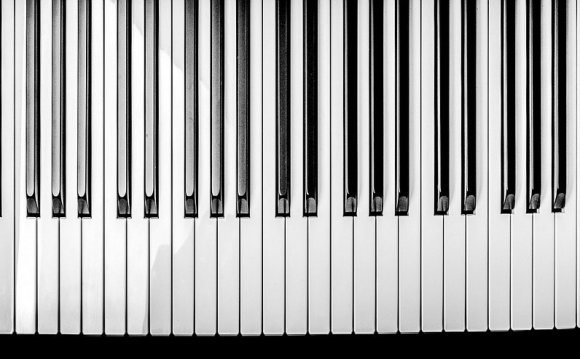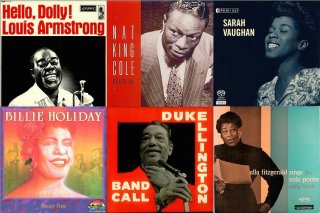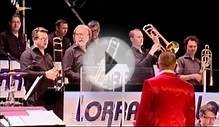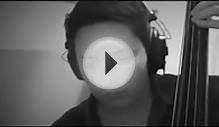
 Adam P. Newton recently became a parent for the first time, therefore he has decided to give an explanation for totality of post-WWII Western pop music to their brand new child, “Fig”… one style at any given time.
Adam P. Newton recently became a parent for the first time, therefore he has decided to give an explanation for totality of post-WWII Western pop music to their brand new child, “Fig”… one style at any given time.
What’s up, Fig? While folks from our last installment like Jimmie Rodgers and Hank Williams Sr. plied their particular trade-in honky-tonks and party halls across Tx plus the Southern, the music artists with this number were smoking cigarettes clubs, taverns and dance flooring with horns, strings and vibrant plans that displayed great music creativity, a wry love of life and its model of love. And it definitely didn’t hurt that jazz regarding the 1920s, ’30’s and ‘40s got men and women off their particular legs and into each other's arms with a few inventive dance tips.
it is also essential to know just how collaborative this era ended up being. A number of these designers performed with each other throughout their careers — some were pianists, among others had been stellar singers, though some played trumpet, saxophone or electric guitar. And much more were composers and bandleaders which arranged tunes and created a cohesive noise. There are lots of mentor/protégé sets about this number, although some had been pals and long-term colleagues whom simply “got” each other’s sensibilities.
However, I would personally be remiss not forgetting the racial segregation that defined the changing times and affected the milieu for which these designers performed. There clearly was little blending of audiences during very early jazz era, just like there is restricted racial intermingling in the usa generally. We recognize since big band, move and jazz have considerably in keeping musically — in their particular heyday, these were often held aside because of the race and socioeconomic status associated with the fans and professionals.
Therefore, thereupon bit of social understanding within arms, let’s talk about the actual music that made those crowds jump, jive and wail.
LOUIS ARMSTRONG, “Heebie-jeebies”
a founder of jazz, “Satchmo” brought the category out of Dixieland and ragtime (believe Joe “King” Oliver and Scott Joplin) together with inventive mixture of soaring cornet lines, scat singing and music whimsy. His lighthearted tone put the phase for where jazz could go — particularly in terms of crossing racial obstacles. With this track, you hear a super taut number of artists each performing an intricate melodic expression without ever before stepping on each other’s feet, which permitted a good amount of area for soloists and dancers to groove.
BESSIE SMITH, “Nobody Knows You When You’re Down-and-out”
Good Lord, this woman’s voice is indeed wonderful. Also known as “Empress of the Blues, ” Smith reigned supreme as a jazz vocalist for about 10 years before the woman untimely demise in 1937. While her lyrical content was similar to that of blues performers of the period, her prodigious singing capabilities set the woman apart, preferring to straight back the woman effective and raspy alto with 12-bar jazz passages rather than warbling guitar licks. Do your self a favor and never hear the type of this track Eric Clapton released on their Unplugged record back 1992. It lacks all the pain and heartbreak of Bessie’s.
DUKE ELLINGTON, “It Don’t Mean anything (If It Ain’t Got That Swing)”
A prodigious composer and talented pianist, Ellington helped press jazz from clubs and to the larger pantheon of western US music together with his penchant for three-minute tunes perfect for attempting to sell 78s and 45s. Their writing design balanced multilayered nuance with verve and a flair for a the remarkable. So that as you can easily hear on this track, the horns bleat with power and quality, while their piano playing ended up being percussive and powerful and served because the root where everything else pivoted.
AMOUNT BASIE, “One O’Clock Jump”
Would you hear the rollicking piano riff because video? That was the wizard of Count Basie. He was raised playing vaudeville and silent-movie sound paths, therefore he knew how exactly to carry the tenor and weight of-the-moment in just music, but he was in addition an established performer whom slid effortlessly between formal instruction and playing by ear. These types of capability assisted him grow aided by the times, since when the first trend of jazz and big band slipped in popularity post-World War II, he also discovered ways to incorporate some bebop into his work. But also for Basie, it was constantly concerning the beat.
CAB CALLOWAY, “Minnie the Moocher”
Some people of your Dad’s generation had been introduced to Calloway and this track in 1980’s The Blues Brothers, this cat was already a legend in jazz and blues sectors because of his tenure operating things at The Cotton Club, one of several top jazz clubs in the united kingdom. Calloway had been an electrifying performer, singer and bandleader whoever over-the-top phase antics set the dining table for pop and stone performers years later on.
BENNY GOODMAN, “Sing, Sing, Sing (With a Swing)”
On one of the most iconic paths by the most influential musicians of all time, Goodman graces your ears with his powerful clarinet wails (yes, I said powerful), while leading their team into a raucous groove that compels you to get off your own feet. This will be swing songs — regardless of what some ska musical organization might inform you later in life — and Benny Goodman understood just how to mesh jazz flair with classical stylings into a rambunctious good-time. The drums rumble, the horns bleat and music shines through to the twenty-first century.
DJANGO REINHARDT, “Minor Swing”
This guy. That electric guitar. That percussive design. Reinhardt could be the just non-American into consideration about this list, but he earns it as one of the most important musicians of them all. Playing without use of the 4th and fifth hands on his left-hand, he'd to create a whole way of playing to conquer that barrier, causing a style few have already been capable mimic. As well as on this standout track from their repertoire, you’re graced with rhythmic and frenetic licks which can be still very danceable and may match both jazz and swing schools.
LOUIS PRIMA, “Jump, Jive, An’ Wail”
An initial word of care — don’t go looking for a version of this song from some thing known as the Brian Setzer Orchestra. Prima joined New Orleans ragtime syncopation with big-band horn riffs to great impact and stupendous expert outcomes. He possessed a magnetic personality and a penchant for danceable hooks. And also for the Disney fans in your life, make certain you tell ‘em just how Prima voiced King Louie within the Jungle Book, performing the track “I Wanna resemble You.”
INTERESTING VIDEO










